Hospital Cave on Cat Ba Island is a hidden wartime hospital built inside limestone cliffs. Discover its 17 rooms, unique history, and hidden stories of resilience.
1. Introduction of Hospital Cave
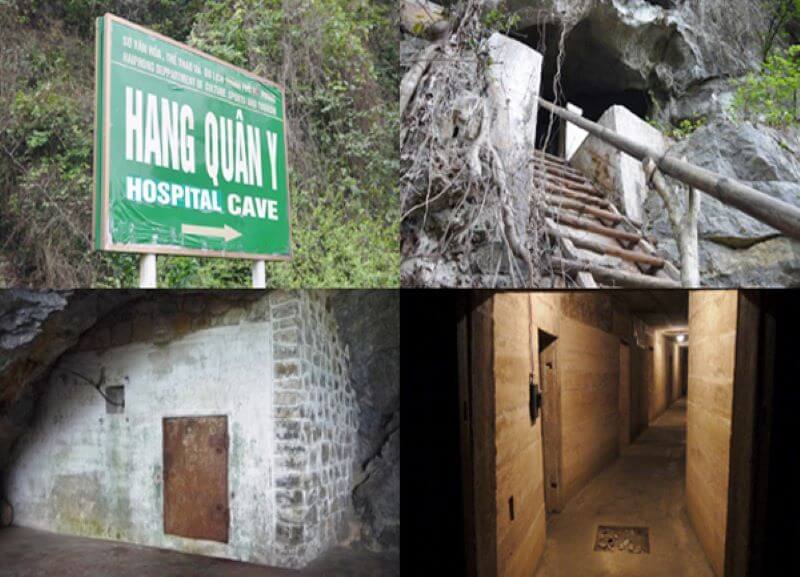
Hospital Cave on Cat Ba island
Hospital Cave is not your typical tourist attraction. From the outside, it looks like just another karst mountain, but step inside and you’ll find an underground world that once functioned as a fully equipped wartime hospital. For international travelers, this place offers a rare opportunity to see how history and nature blend together on Cat Ba. Instead of just reading about the war, you can walk through the actual corridors where doctors worked, soldiers recovered, and meetings were held in secret.
This mix of history, architecture, and mystery makes Hospital Cave a must-see for anyone visiting Cat Ba national park.Cat Ba island isn’t just about natural beauty – it’s also home to stories that shaped Vietnam’s past.
2. What is a Hospital Cave? Historical background
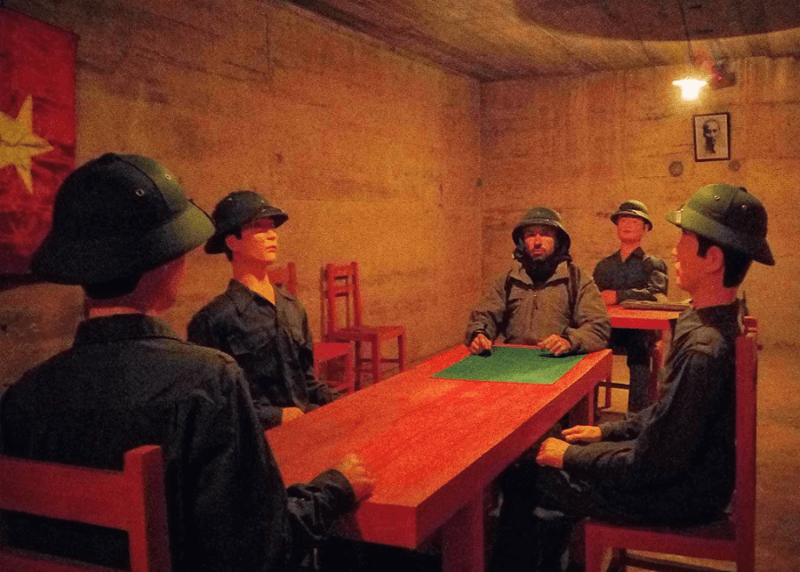
A mannequin reenacting a scene in a room inside the Hospital Cave
Hospital Cave, as the name suggests, is a secret hospital built inside a mountain on Cat Ba island, about 10 kilometers from Cat Ba town and close to Cat Ba national park. Constructed between 1963 and 1965, during the height of the Vietnam War, the cave was designed to withstand heavy bombing while providing a safe place for medical care and military operations.
The cave was carefully carved out of solid limestone, making it virtually indestructible against air raids. Inside, it could house hundreds of people, including wounded soldiers who needed treatment and military leaders who used it for planning sessions. Beyond its medical role, the cave also functioned as a secure hideout, giving the Vietnamese army a huge strategic advantage.
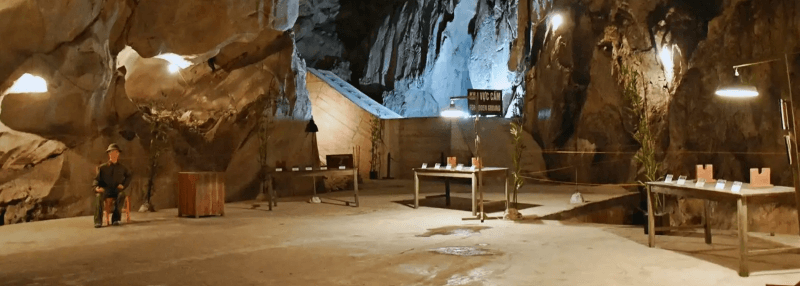
The space inside the wartime Hospital Cave
Walking through Hospital Cave today, visitors can feel the weight of history. The cold stone walls, the narrow passageways, and the simple but functional rooms all tell stories of resilience and ingenuity. While Cat Ba national park represents nature’s beauty and biodiversity, Hospital Cave adds another dimension – the story of human survival in times of war.
3. Highlights of Hospital Cave
What makes Hospital Cave so fascinating is its sheer design and functionality. Spread across three levels, the cave once held 17 different rooms, including patient wards, an operating room, a large meeting hall, and even a small cinema for entertainment.
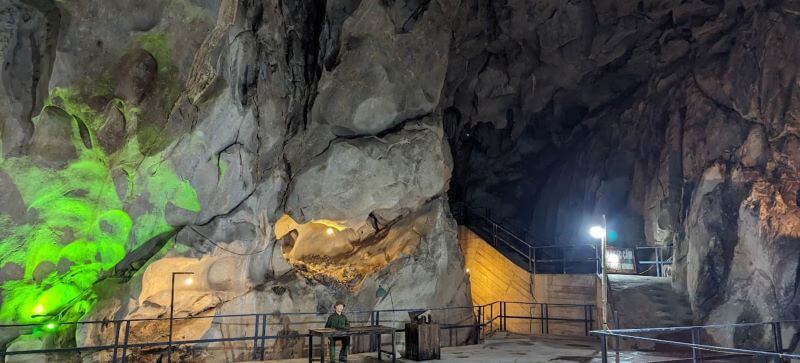
Limestone formations inside the cave
One of the highlights for visitors is the operating room, where surgeons worked under dim light to save lives. The meeting hall, large enough to host dozens of people, shows how the cave doubled as both a hospital and a command center. The cinema space reminds travelers that even in wartime, moments of rest and morale-boosting were essential.
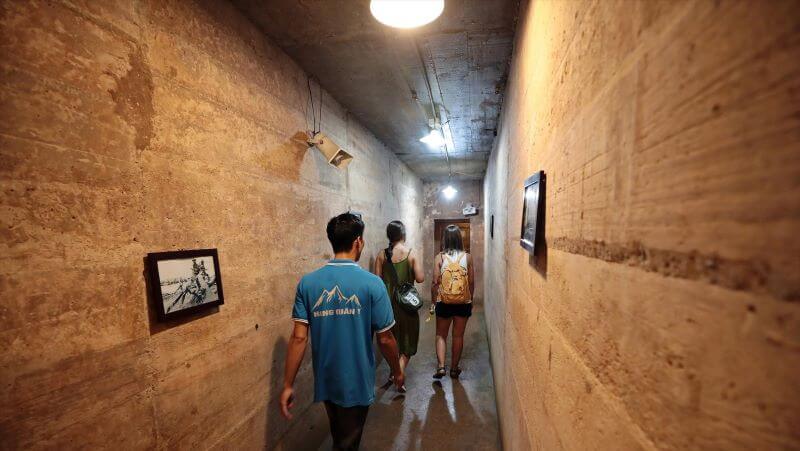
The visitor path in Hospital Cave
It’s not just the architecture that amazes but also the thought of how effectively it was used during one of Vietnam’s most challenging periods.
4. Visitor information
Location: Tran Chau, Cat Hai, Hai Phong, Vietnam
How to get there: You can reach it by motorbike, taxi, or as part of an organized tour. The ride itself is scenic, passing through green valleys and limestone cliffs.
Opening hours: open daily from 8:00 AM to 5:00 PM
Entrance fee: around 40,000 VND/pax (just a couple of dollars)
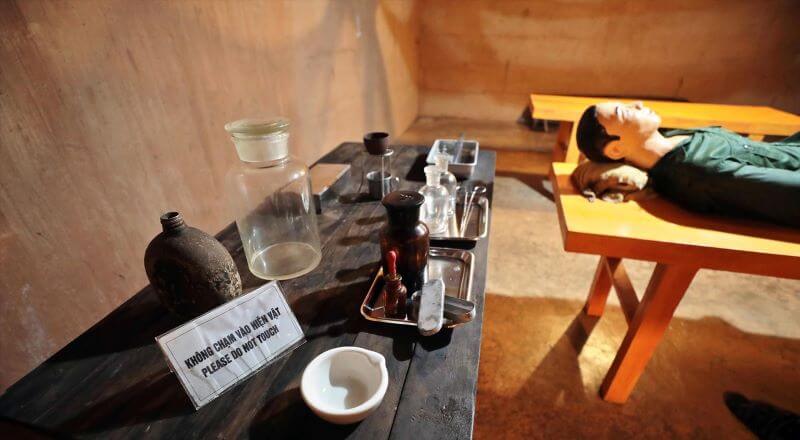
Exhibit room
At the entrance, you’ll find local guides who can walk you through the site and share detailed stories about its history – a highly recommended option if you want to fully appreciate its significance.
Allow at least 30–45 minutes to explore the cave. The pathways are straightforward but involve some steps, so comfortable shoes are recommended. Many visitors combine a stop at Hospital Cave with a trip to Cat Ba national park or Trung Trang Cave since they are all located along the same route.
5. Travel tips for visitting Hospital Cave
- Wear sturdy walking shoes: The entrance involves climbing stone steps. Inside, the cave is cool but can be slippery, so sneakers are ideal.
- Rent a motorbike for the day: This gives you flexibility to explore Hospital Cave, Cat Ba national park, and nearby attractions like Trung Trang Cave at your own pace. Taxis are also available from Cat Ba town.
- Bring a flashlight or use your phone’s light: The cave has some lighting, but it’s dim in certain areas. Extra light makes the visit more enjoyable.
- Join a guided tour: Walking through the cave is interesting, but a guide adds valuable context. You’ll learn about the design of the rooms, how patients were treated underground, and how the hospital stayed hidden during wartime.
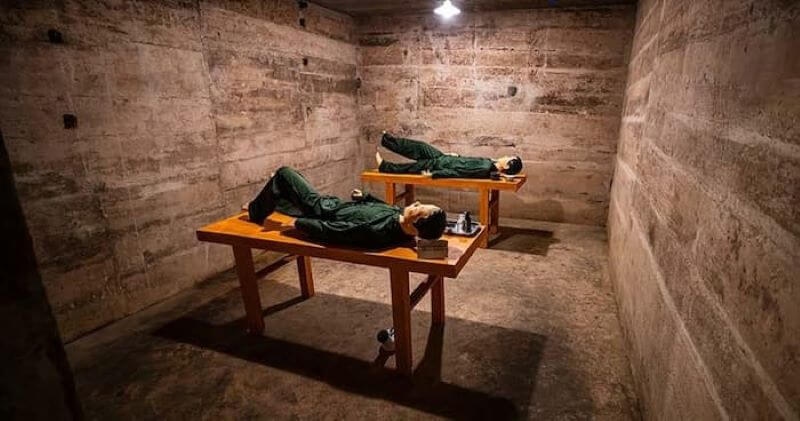
Exhibit room
6. FAQs about Hospital Cave
Q: How long does it take to visit the Hospital Cave?
About 30 to 45 minutes, depending on whether you explore on your own or with a guide.
Q: Is it suitable for children?
Yes, children can visit, but keep in mind there are stairs and dim lighting.
Q: Can you visit without a guide?
Yes, but a guide adds valuable context and makes the experience richer.
Conclusion
Hospital Cave is more than just a cave – it’s a living museum of Vietnam’s wartime history, hidden within the limestone cliffs of Cat Ba island. For travelers heading to Cat Ba national park, this site is an easy and rewarding stop along the way. It offers a unique glimpse into the past, where resilience and creativity turned a mountain into a hospital, a meeting place, and a symbol of survival.
If you’d like to explore Cat Ba Island, feel free to contact Cat Ba Du Ky Travel at +84 989 745 338 for travel advice. You can also check out our full-package Cat Ba tours below:
- Lan Ha Bay - Ha Long Bay 1 Day Boat Tour From Cat Ba
- Night Kayaking Tour With Bioluminescence Plankton On Lan Ha Bay
- Cat Ba National Park - Trung Trang Cave Half Day Trekking Tour
- Lan Ha Bay - Ha Long Bay 2 Days 1 Night Cruise From Cat Ba Island
- Ha Long Bay - Lan Ha Bay - Cat Ba Island 3 Day 2 Night Tour From Hanoi






